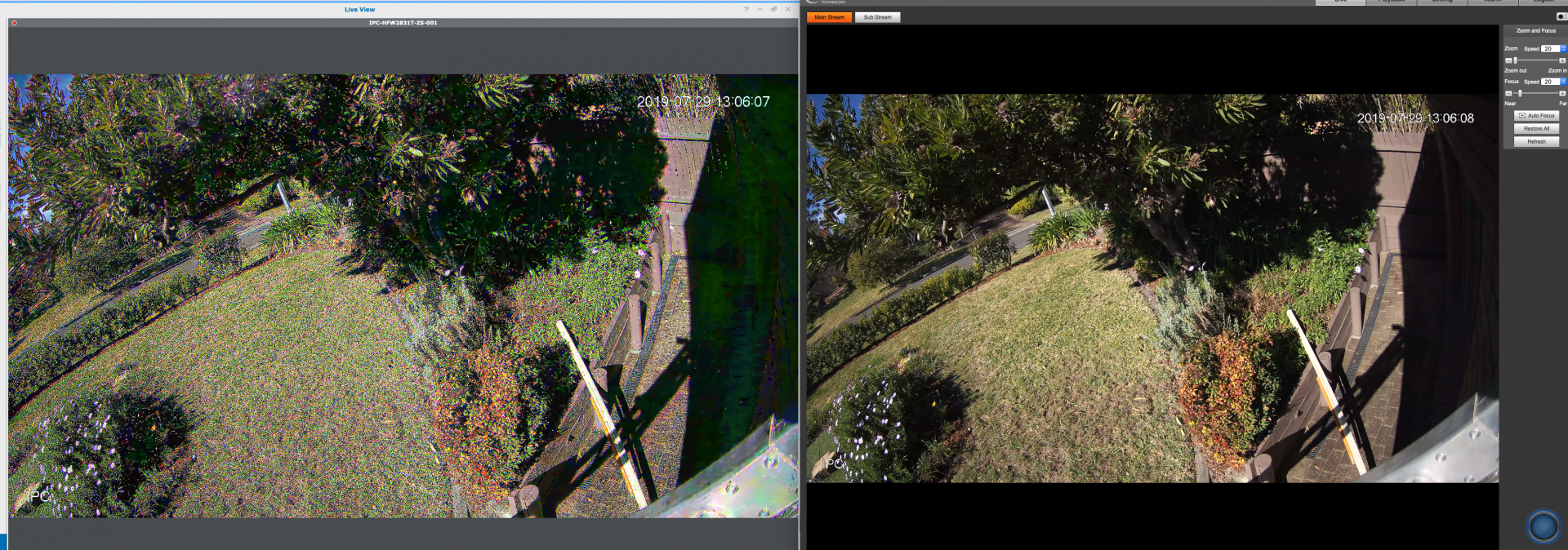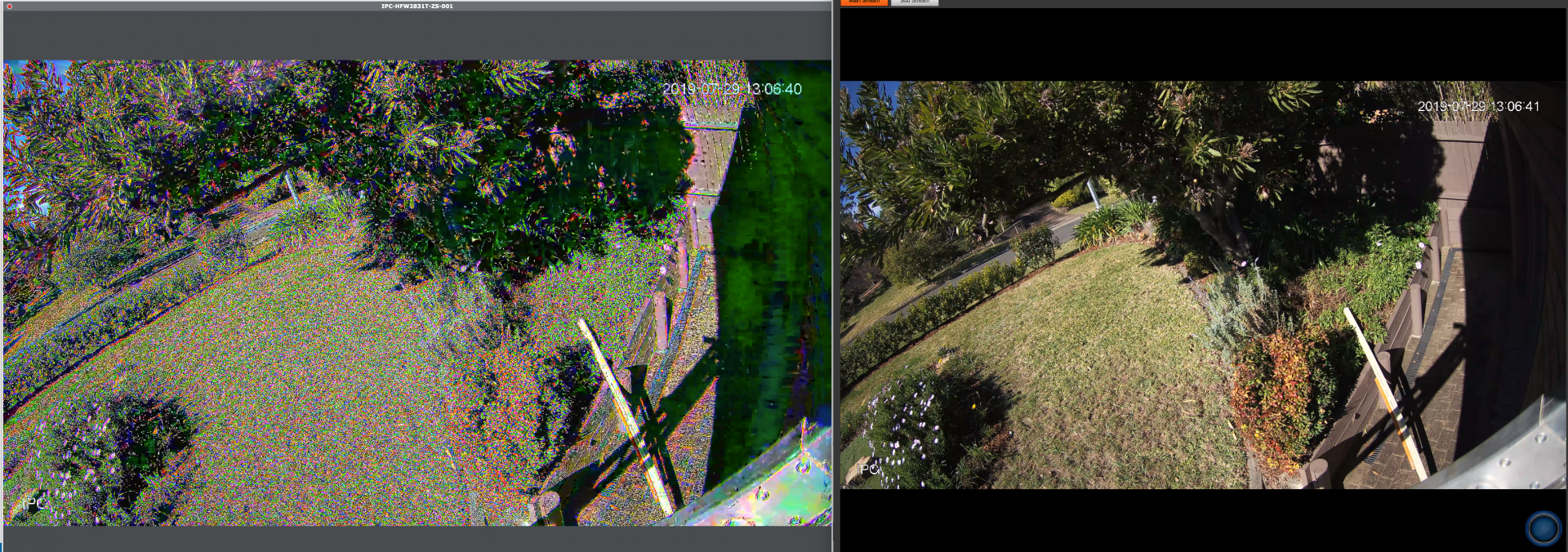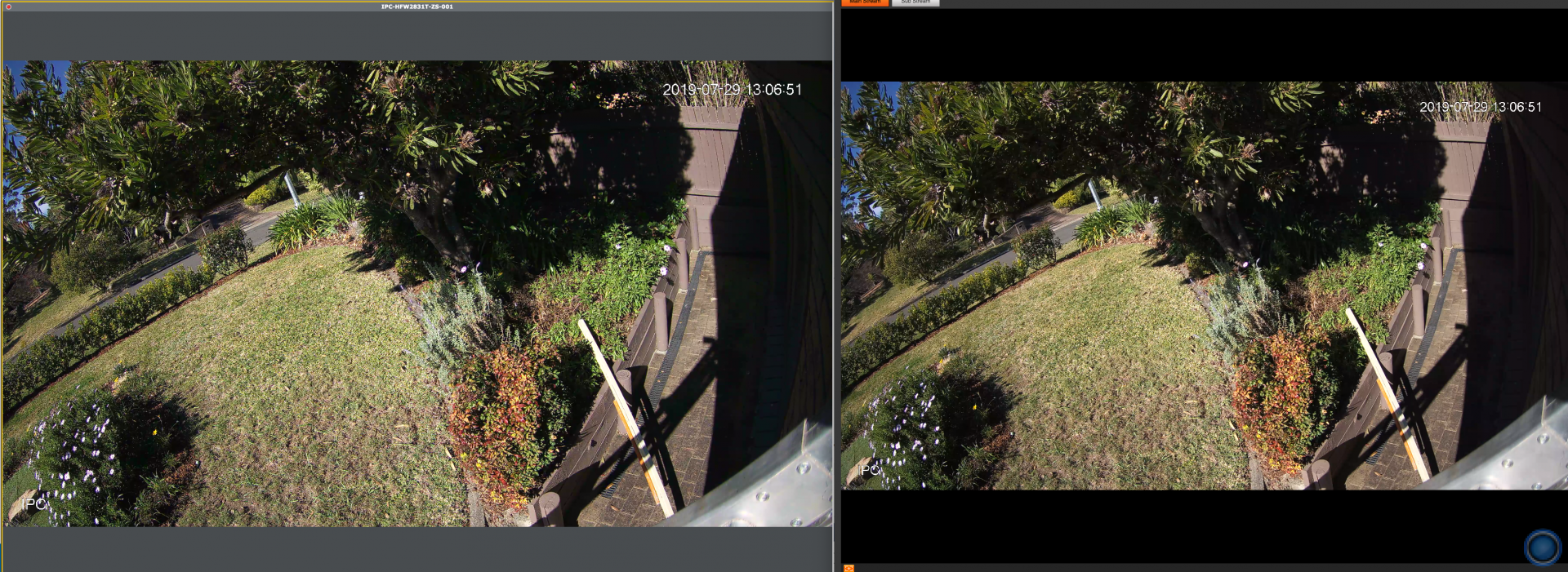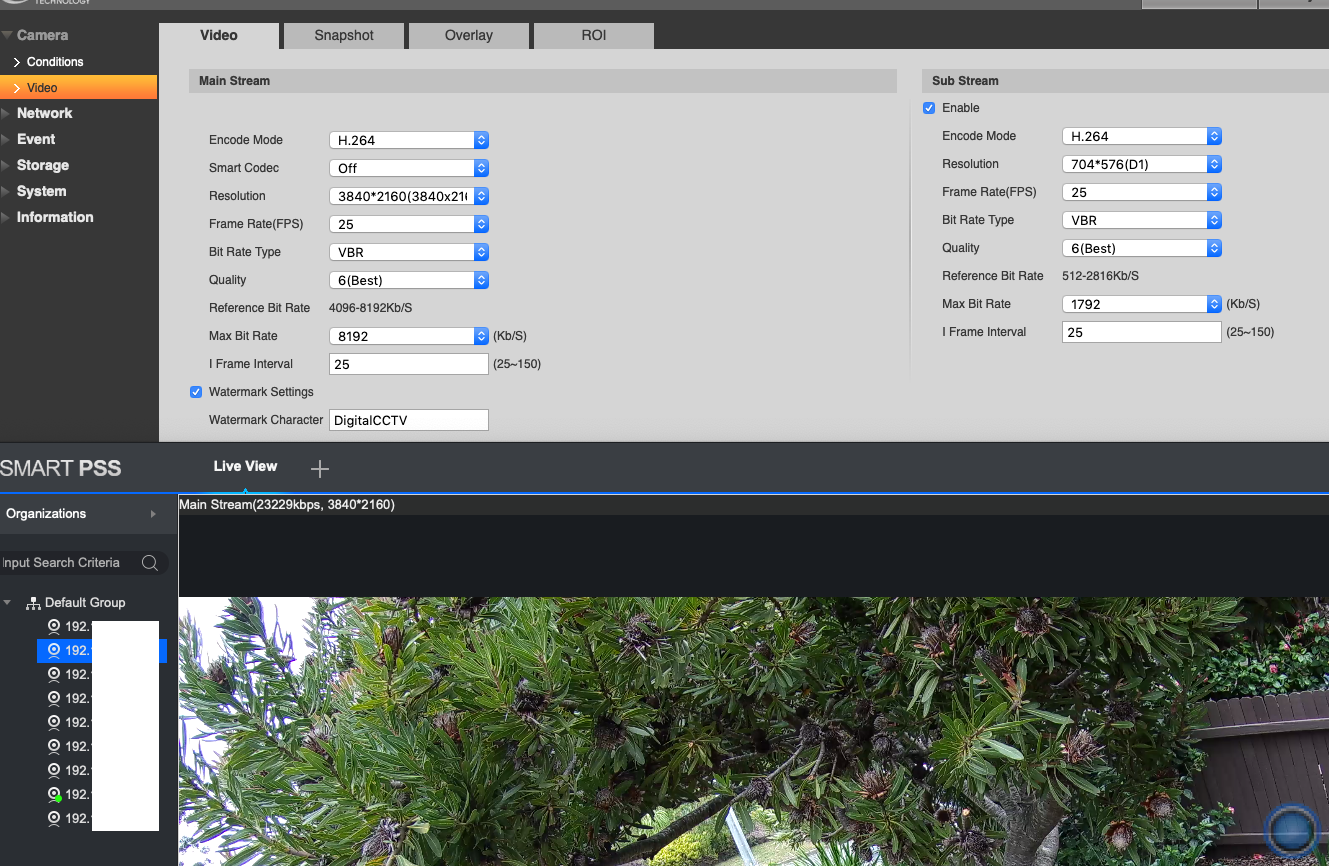Hi,
I am having an issue with a IPC-HFW2831T-ZS which has me stumped.
The camera was purchased two weeks ago but only installed it today. I have two others of the same model that were bought at the same time but those do not present with the same problem.
The problem is that the image degrades (weird colouring, pixelation, timestamp 10-20 seconds behind the rest of the cameras) over a couple of minutes. It gets to be unwatchable and then suddenly it comes back to what it is supposed to be like. The cycle repeats itself all through the day. It doesn't seem to do it when it switches to BW. The problem is not just in live view, the degraded image is present in the recordings created by SurveillanceStation.
I have tried the following without success:
- Deleting the camera from Surveillance Station and configuring from scratch.
- Changing resolution to 1080p
- Changing FPS (tried all values from 5 to 25)
- Using different bitrate values.
- Using different iframe values.
- Enabling/disabling smartcodec
- Using different H264 profiles.
- Changing the cable.
- Factory resetting the camera
- Downgrading to a previous firmware (from Jan-19 to Oct-18)
If I use the browser to view the camera's image or if I use SmartPSS there is no problem. It seems to only happen with SurveillanceStation. I have another two cameras of the same model and have no problem with those (also setup on SurveillanceStation).
The only thing that I have found that is different is that the "bad' camera is always transmitting at 12,000+ bps regardless of what the bitratesettings say on the camera's setup page. It sometimes shoots up to 200,000+ but stays around 20,000 most of the time. The other two cameras do not exceed the limits set on their web pages.
I'm starting to think this might be a dud camera but would like to hear some opinions/suggestions before I try to return it.
Here are some screen captures. The image on the left is from SurveillanceStation and then on the right is form the browser (Firefox) or SmartPSS.
The image starts to look a bit grainy on Surveillance Station (left)
After a minute or two it is heavily artifacted and unwatchable
Then it snaps back to normal
You can see that the camera is not sticking to the max bitrate set in the config page. Even if CBR is selected the bitrate is always variable and over 12,000 kbps
I am having an issue with a IPC-HFW2831T-ZS which has me stumped.
The camera was purchased two weeks ago but only installed it today. I have two others of the same model that were bought at the same time but those do not present with the same problem.
The problem is that the image degrades (weird colouring, pixelation, timestamp 10-20 seconds behind the rest of the cameras) over a couple of minutes. It gets to be unwatchable and then suddenly it comes back to what it is supposed to be like. The cycle repeats itself all through the day. It doesn't seem to do it when it switches to BW. The problem is not just in live view, the degraded image is present in the recordings created by SurveillanceStation.
I have tried the following without success:
- Deleting the camera from Surveillance Station and configuring from scratch.
- Changing resolution to 1080p
- Changing FPS (tried all values from 5 to 25)
- Using different bitrate values.
- Using different iframe values.
- Enabling/disabling smartcodec
- Using different H264 profiles.
- Changing the cable.
- Factory resetting the camera
- Downgrading to a previous firmware (from Jan-19 to Oct-18)
If I use the browser to view the camera's image or if I use SmartPSS there is no problem. It seems to only happen with SurveillanceStation. I have another two cameras of the same model and have no problem with those (also setup on SurveillanceStation).
The only thing that I have found that is different is that the "bad' camera is always transmitting at 12,000+ bps regardless of what the bitratesettings say on the camera's setup page. It sometimes shoots up to 200,000+ but stays around 20,000 most of the time. The other two cameras do not exceed the limits set on their web pages.
I'm starting to think this might be a dud camera but would like to hear some opinions/suggestions before I try to return it.
Here are some screen captures. The image on the left is from SurveillanceStation and then on the right is form the browser (Firefox) or SmartPSS.
The image starts to look a bit grainy on Surveillance Station (left)
After a minute or two it is heavily artifacted and unwatchable
Then it snaps back to normal
You can see that the camera is not sticking to the max bitrate set in the config page. Even if CBR is selected the bitrate is always variable and over 12,000 kbps




